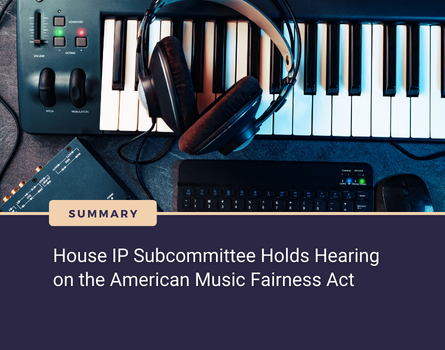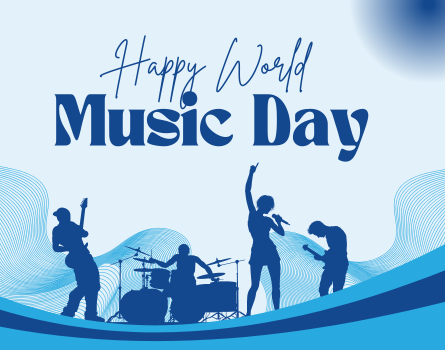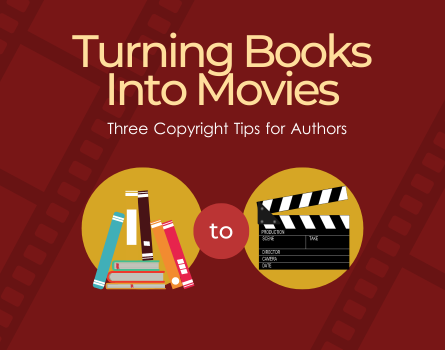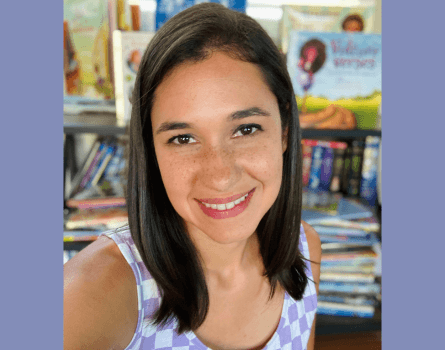From classical to hip-hop and metal to opera, music is a medium that unites people despite linguistic and cultural barriers. In celebration of World Music Day 2024, we recognize the importance of music, its evolution, and all that it has done for humanity. While the importance of music is something that has been written about time and time again, the copyright laws that protect music have evolved just as much as the medium has. As technology improved and advanced, so did music copyright law through a long history of litigation and amendments to the Copyright Act.
Music Copyright Law Basics
Copyrights are a Constitutionally protected and created right that grants authors certain exclusive rights to an original work of authorship fixed in a tangible medium of expression. These five exclusive rights are the right to: (1) reproduce the copyrighted work in copies or phonorecords; (2) prepare derivative works based upon the copyrighted works; (3) distribute copies or phonorecords of the copyrighted work to the public by sale or other transfer of ownership (or by rental, lease, or lending); (4) perform the copyrighted work publicly; and (5) display the copyrighted work publicly.
Copyright Protections for a Song: Sound Recordings vs Musical Works
In terms of copyright protection for a song, the Copyright Act recognizes two distinct copyrights—the sound recording and the musical work. The sound recording is a work that results from a fixation of a series of musical, spoken, or other sounds but not including sounds accompanying a motion picture or other audiovisual work, whereas a musical work is the underlying compositional arrangement of notes, lyrics, melodies, and chords of a song.
For example, using the song Blinding Lights by The Weeknd, the sound recording would be the recording of a specific performance of the song by The Weeknd. The sound recording is owned by XO Records/Republic Records, while the musical work is owned by The Weeknd and other songwriters, like Max Martin.
Because sound recordings and musical works are two different kinds of copyrightable works, they are treated differently under the Copyright Act. Musical works are subject to compulsory licensing, meaning, to reproduce a musical work, a person does not need to get permissions from the musical work copyright owner. Instead, the user pays a statutorily set licensing fee, pursuant to §115 of the Copyright Act. Sound recordings on the other hand are not subject to compulsory licensing, meaning that one would need to get permission from the copyright owner to use their sound recording. However, pursuant to §114 of the Copyright Act, sound recordings have a statutory licensing scheme only for non-interactive digital streaming services, like Pandora or Sirius XF.
To understand why music was given two distinct copyrights and why they are each treated differently, we must examine the history of the Copyright Act.
Copyright Act of 1790
Shortly after the U.S. gained independence, Congress, using its enumerated powers, enacted the Copyright Act of 1790. Under the 1790 Act, when works were registered, creators were granted the exclusive right to print, reprint, publish, or vend their maps, charts, and books for an initial period of 14 years. Music, however, was not specifically mentioned.
Since 1790 was well before the advent of cassettes, vinyl records, and streaming, music was primarily a live endeavor, i.e., people could not listen to pre-recorded music. Moreover, if people wanted to play any music, they had to rely on sheet music or their musical ear. Therefore, a musical performance of a song was not protectable. Similarly, music was not an enumerated category in the 1790 Act since, if artists wanted copyright protections over their musical works, they could simply register their sheet music under the books categories of books. The first musical composition to be registered as a book, under the Copyright Act, was “The Kentucky Volunteer”. Musical works would not be a separate copyrightable work until the passage of the Copyright Act of 1831.
Music Copyright in the 1800’s
As a part of the 1831 revision, musical works were finally listed as their own separate category of work eligible for copyright protection. However, public performances of composition were still unprotected and would not be awarded protection until 1897. The first musical work to be registered with the U.S. Copyright Office, under the category of musical works, was “Maid of My Love”, written by David L. Richardson and I.T. Norton.
Another notable development in American copyright law was the Berne Convention. While the Berne Convention would not be ratified in the United States until 1989, 103 years after its development in 1886, it laid the groundwork for contemporary-American copyright. The Berne Convention included rights for musicians to control who, what, and how their musical works were reproduced and established minimum exclusive rights for copyright owners. Moreover, it provided immediate copyright protection once a work was fixed.
The Birth of Compulsory Mechanical Licenses
The third general revision of the Copyright Act occurred in 1909, and included a response to the U.S. Supreme Court (SCOTUS) decision in White-Smith Music Publishing Company v. Apollo Company. The issue in this case centered on whether piano rolls were considered musical copies. A piano roll is a roll of paper with holes punched in it, each holes representing notes on the piano. When a player piano’s reading device came across a hole in the paper, the piano would play a sound, and thus play a song over time. SCOTUS ruled that piano rolls were not copies of musical works because the holes in piano roll paper were not an intelligible musical notation to an ordinary human being. In a response to SCOTUS’s ruling, Congress recognized a mechanical reproduction right for musical works and also created the compulsory licensing system, which allowed people to, without the permission of the copyright owner of the musical, make reproductions of a musical work if they paid a statutorily set royalty fee payable to the copyright owner.
Protection of Sound Recordings in Response to Technological Shifts
Before the passage of the 1971 Sound Recording Act, sound recordings were protected in a piecemeal manner, by state law. Therefore, there was a lack of uniformity and understanding over a sound recording’s copyright protection. As such, record labels continually asked Congress to protect sound recordings, so that these creative works could be protected in a uniform and consistent manner. In response, Congress enacted the 1971 Sound Recording Act, which extended protections to sound recordings fixed and published, with a copyright notice, on or after February 15, 1972. However, sound recordings fixed before February 15, 1972, were still unprotected and would not be protected until the passage of the Music Modernization Act in 2018. Also, notably, the public performance right was also not included as an enumerated exclusive right for sound recordings.
The 1976 Act made other major improvements to the 1909 Act. Congress reasoned that due to technological advances in communicating printed material like, information storage, retrieval devices, motion-pictures, and sound recordings, the Copyright Act needed to be modernized. As such, Congress, recognized copyright protections for any “original work of authorship fixed in a tangible medium of expression.” For musicians or any artists, this would mean that the minute they create a sound recording, write lyrics, or compose a piece, there would be a de facto copyright. While there is a de facto copyright with fixation, artists should still register their works with the U.S. Copyright Office so they can pursue litigation and get special remedies like, statutory damages and attorney’s fees. More information can be found here.
In 1995, Congress passed the Digital Performance Right in Sound Recordings Act (DPRA). The DPRA granted sound recording copyright holders the exclusive right to perform their sound recordings publicly via digital audio transmission. Congress purposefully excluded the right to perform sound recordings via terrestrial broadcast, i.e., AM/FM radio. Congress reasoned that “performers have benefitted considerably” from airplay and other promotion activities provided by both noncommercial and advertiser-supported, free over-the-air broadcasting”. Moreover, Congress did not want to “jeopardize the mutually beneficial” relationship between over-the-air broadcasting and sound recording industries, by imposing burdens on over-the-air broadcasting industry.
Music Piracy in the Digital Age
With the rise of the Internet, transmitting media across platforms became easy as ever. While the internet brought numerous benefits, it also ushered in rampant piracy issues via peer-to-peer sharing networks like Napster, LimeWire, and Pirate Bay. With peer-to-peer sharing, users were able to upload and copy unauthorized replications of all kinds of copyrighted works, including music, movies, and videogames. The music industry, in particular, took a massive financial hit from rampant online piracy. The rise of peer-to-peer networks were the progeny of infamous lawsuits, like Metro-Goldwyn-Mayer Studios Inc. v. Grokster, LTD., and A&M Records, Inc. v. Napster, Inc.These cases, set precedent to help the music industry recover from peer-to-peer sharing and continue growing.
Metro-Goldwyn-Mayer Studios Inc. v. Grokster, LTD.
In Grokster, defendants Grokster and StreamCast Network distributed peer-to-peer sharing software. Most of what was disseminated through their software was copyrighted material, resulting in a suit commenced by Metro-Goldwyn-Mayer Studios (MGM), record companies, and other copyright holders. The U.S. Supreme Court, ruled the defendants were liable for infringement because Grokster distributed the software, and promoted it to infringe copyrights.
A&M Records, Inc. v. Napster, Inc.
Similarly, In Napster, A&M Records sued Defendant Napster for the distribution of A&M Records copyrighted music on Napster’s peer-to-peer sharing network. The district court granted A&M a preliminary injunction finding there was a likelihood Napster was contributorily and vicariously infringing; Napster appealed. The Ninth Circuit ruled that Napster knew that there was infringing material being distributed on their software and that Napster could police such activity, but chose not to do so, for their financial gain.
While these lawsuits did effectively establish secondary liability for major pirating sources, online piracy was still a rampant issue bleeding the industry. As such, the Digital Millenium Copyright Act (DMCA), became a tool for record labels. The DMCA provided a method for record companies to have unauthorized uses of their copyrighted material taken down. For example, if a YouTube account is posting unauthorized copies of the song “The Party and the After Party” by the Weeknd, the Weeknd’s authorized representative can send YouTube a takedown notice requesting said infringing copy to be taken down. The takedown notice informs YouTube that one of their users is uploading copyrighted material and if YouTube does not act swiftly to take it down, then they could potentially be vicariously or contributorily liable for copyright infringement because the DMCA safe harbors no longer grant them immunity from their users’ infringements.
The Music Modernization Act of 2018
As on-demand-music streaming took over, there was a growing problem of musical works royalties that were not being properly paid out to songwriters and music publishers. In response to this and other music issues, the Music Modernization Act (MMA) was enacted with the aim of bringing music copyright law up to par with the digital age. The first major portion of the MMA was the creation of the Mechanical Licensing Collective (MLC) to administer blanket licenses. The MLC created a database of musical works containing all corresponding information on who the musical works’ copyright holders are. As such, when royalties are passed through the MLC, copyright owners can be paid in an easier and more streamlined fashion.
The next major portion of the MMA is the Classics Act. As discussed above, in 1971, sound recordings made on or after February 15, 1972, were given federal copyright protection; however, sounds recordings made before that date were not. Under the Classics Act, sound recordings fixed before February 15, 1972, would be extended copyright protections. As such, these recordings are now subjected to the statutory licensing scheme for non-interactive streams, thus allowing for the payment of these uses of such sound recordings in the streaming age. Rights owners of such sound recordings could also be awarded special remedies like attorney fees and statutory damages. Moreover, The Classics Act also extended copyright term lengths for pre-72 recordings. For example, sound recordings published between 1947 and 1956 were given an additional 15 years of protection, on top of their 95-year term.
The last major portion of the MMA is the Allocation for Music Producers Act. The Allocation for Music Producers Act allowed producers and engineers to obtain royalties, from satellite and radio performances, in a more streamlined fashion. Traditionally, producers and engineers would have to negotiate directly with an artist and apply through said artist to collect royalties. Now, producers and engineers can provide a Letter of Direction to Sound Exchange and receive their hard-earned royalties.
Conclusion
To celebrate World Music Day 2024, we commemorate all that music has done for the world. The music industry has and continues to evolve greatly over time, adapt to cultural and technological changes, and has been at the center of many important issues in copyright law and jurisprudence. But given all the obstacles thrown at the industry, the music community has shown time and time again that music will stand the test of time no matter the hurdles it must jump.
If you aren’t already a member of the Copyright Alliance, you can join today by completing our Individual Creator Members membership form! Members gain access to monthly newsletters, educational webinars, and so much more — all for free!











